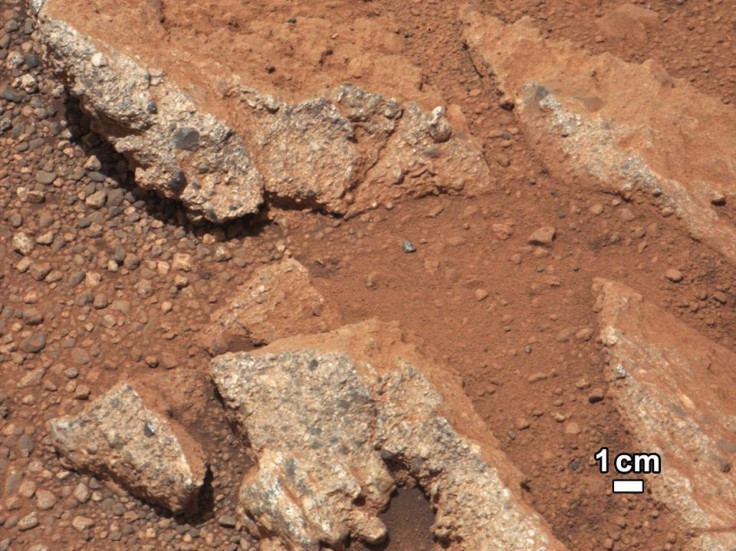NASA's Curiosity Rover Finds Evidence Mars Once Housed 'Hip-Deep' Streambed

After spending close to a month and a half on Mars, NASA’s Curiosity rover has found compelling evidence that Mars once contained significant amounts of water.
NASA scientists announced their discovery on Thursday, pointing to the distinctive formation of what appears to be an ancient gravel stream bed. This gravel seems to have been formed by water in Mars’ Gale Crater as far back as several million years ago.
According to Curiosity mission scientist William Dietrich, the water may have been several feet deep, flowing around three feet per second. The water may have had “a depth somewhere between ankle and hip deep,” Dietrich told USA Today in a press release.
"Plenty of papers have been written about channels on Mars with many different hypotheses about the flows in them," said Dietrich, who also works with the University of California at Berkeley. "This is the first time we're actually seeing water-transported gravel on Mars. This is a transition from speculation about the size of the streambed material to direct observation of it."
Curiosity found the two rock formations, which scientists named “Link” and “Hottah,” earlier in September during its mission in Gale Crater, and after careful analysis, NASA scientists have determined that they were most likely caused by moderately deep, flowing water.
Both rock formations contain many small bits of rounded gravel, while the “Hottah” formation also contains a small round rock protrusion. Both were almost certainly caused by steadily flowing water.
While this find is groundbreaking, Curiosity will continue its mission for quite some time. Ultimately, NASA plans to drive the rover partially up the 3.4 mile high Mount Sharp in the center of Gale Crater and examine its sedimentary composition for possible signs of life. Curiosity is expected to reach the mountain’s foothills in about a year.
According to Caltech researcher and mission scientist John Grotzinger, "This is really just the start of the science mission for the rover."
© Copyright IBTimes 2024. All rights reserved.












